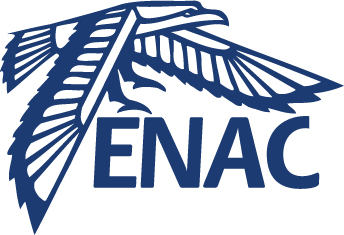GNSS/5G Hybridization for urban navigation
Hybridation GNSS 5G pour de la navigation en milieu urbain
Résumé
Over the past few years, the need for positioning, and thus the number of positioning services in general, has been in constant growth. This need for positioning has been increasingly focused on constrained environments, such as urban or indoor environments, where GNSS is known to have significant limitations: multipath as well as the lack of Line-of-Sight satellite visibility degrades the GNSS positioning solution and makes it unsuitable for some urban or indoor applications. In order to improve the GNSS positioning performance in constrained environments, many solutions are already available: hybridization with additional sensors or the use of signals of opportunity for example. Concerning SoO, mobile communication signals, such as the 4G Long Term Evolution or 5G, are naturally envisioned for positioning. Indeed, a significant number of users are expected to be “connected-users” and 5G systems offers promising opportunities. 5G technology is being standardized at 3GPP; the first complete release of 5G specifications, Release-15, was provided to the community in June 2018. 5G is an emerging technology and its positioning performance, as well as a potential generic receiver scheme to conduct positioning operations, is still under analysis. In order to study the potential capabilities provided by 5G systems and to develop a 5Gbased generic positioning module scheme, the first fundamental step is to develop mathematical models of the processed 5G signals at each stage of the receiver for realistic propagation channel models: the mathematical expression of the useful received 5G signal as well as the AWG (Additive White Gaussian) noise statistics. In the Ph.D., the focus is given to the correlation operation which is the basic function implemented by typical ranging modules for 4G LTE signals, DVB signals, and GNSS. In fact, the knowledge of the correlation output mathematical model could allow for the development of optimal 5G signal processing techniques for ranging positioning. Previous efforts were made to provide mathematical models of received signals at the different receiver signal processing stages for signals with similar structures to 5G signals – Orthogonal ²Frequency Division Multiplexing (OFDM) signals as defined in 3GPP standard. OFDM signal-type correlator output mathematical model and acquisition techniques were derived. Moreover, tracking techniques were proposed, analyzed and tested based on the correlator output mathematical model. However, these models were derived by assuming a constant propagation channel over the duration of the correlation. Unfortunately, when the Channel Impulse Response (CIR) provided by a realistic propagation channel is not considered to be constant over the duration of the correlation, the correlator output mathematical models are slightly different from the mathematical models proposed in the literature.
Le marché de masse des services de positionnement est depuis quelques années en constante croissance, avec une importante augmentation des applications développées pour le positionnement de l’usager. De plus, ces dernières années, la demande des usagers pour obtenir un service de positionnement s’est focalisée sur des milieux plus contraignants que l’environnement classique à ciel ouvert, notamment les environnements urbains ou même indoor. Les systèmes classiques de positionnement GNSS (Global Navigation Satellite System) montrent de claires limitations dans ces types d’environnements. Pour cette raison, les équipements de positionnement dans des milieux contraints ne se limitent pas à utiliser le GNSS comme seul moyen de positionnement. Afin d’améliorer les performances de positionnement dans des milieux urbains, un des possibles axes de développement suivi par les constructeurs de récepteurs est l’usage des signaux de télécommunications mobiles, tel que les signaux LTE (qui commencent à être déployés) ou la future génération 5G, hybridés avec les signaux GNSS. Les choix des signaux de télécommunications est un choix qui suit une logique naturelle car la grosse majorité des usagers dans des milieux urbains ou indoor seront des usagers connectés soit au réseau de téléphonie mobile soit à un réseau spécifiquement déployé pour fournir du positionnement dans des milieux contraints. C’est donc, pour cette raison que cette thèse se centre sur l’étude de l’hybridation GNSS/5G. Les signaux 5G commencent à faire leur apparition, leurs performances en terme de positionnement sont encore peu connues. Les caractéristiques innovantes de ce nouveau signal exigent de nouvelles études. A titre d’exemple, le canal de propagation 5G a des caractéristiques très particulières puisque la 5G envisage l’utilisation des fréquences allant de 500MHz jusqu’à 30GHz. De même, les caractéristiques du signal OFDM en termes d’espacement de sous porteuse et d’architecture des pilotes 5G requièrent de plus amples études.
| Origine | Version validée par le jury (STAR) |
|---|
